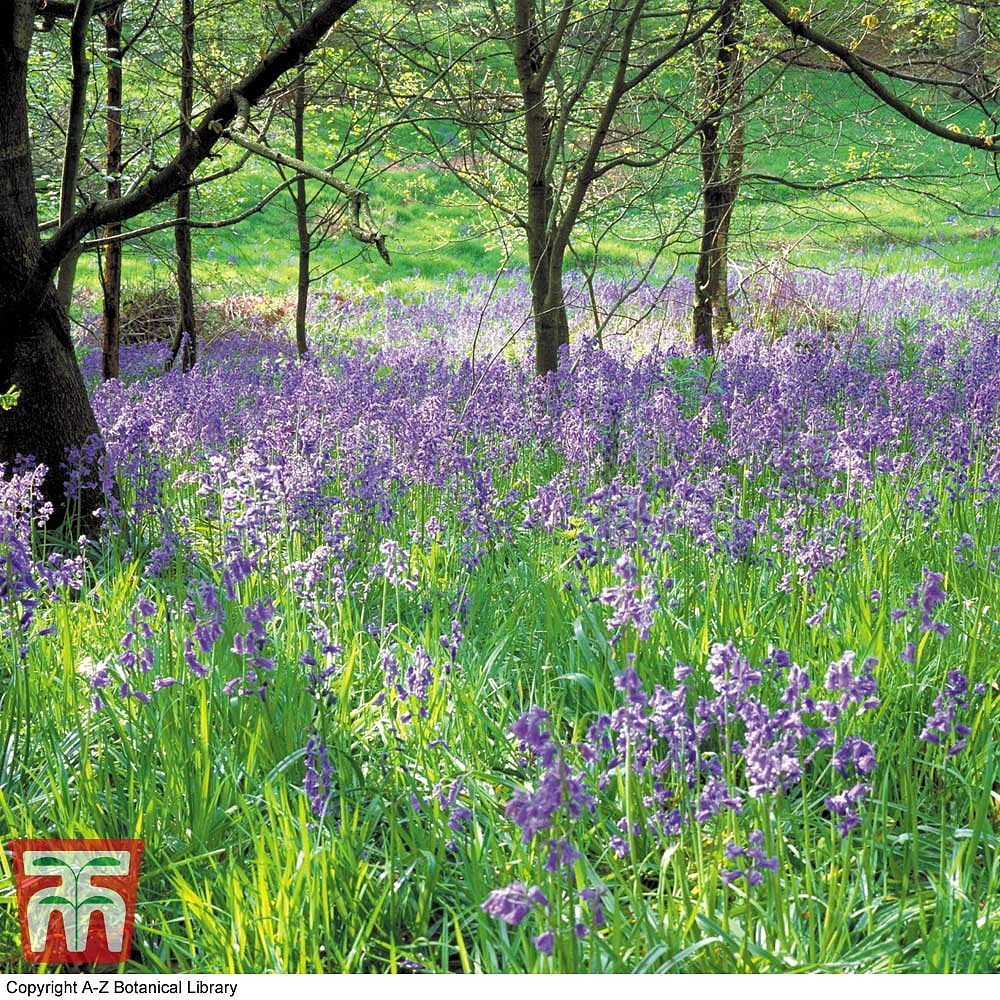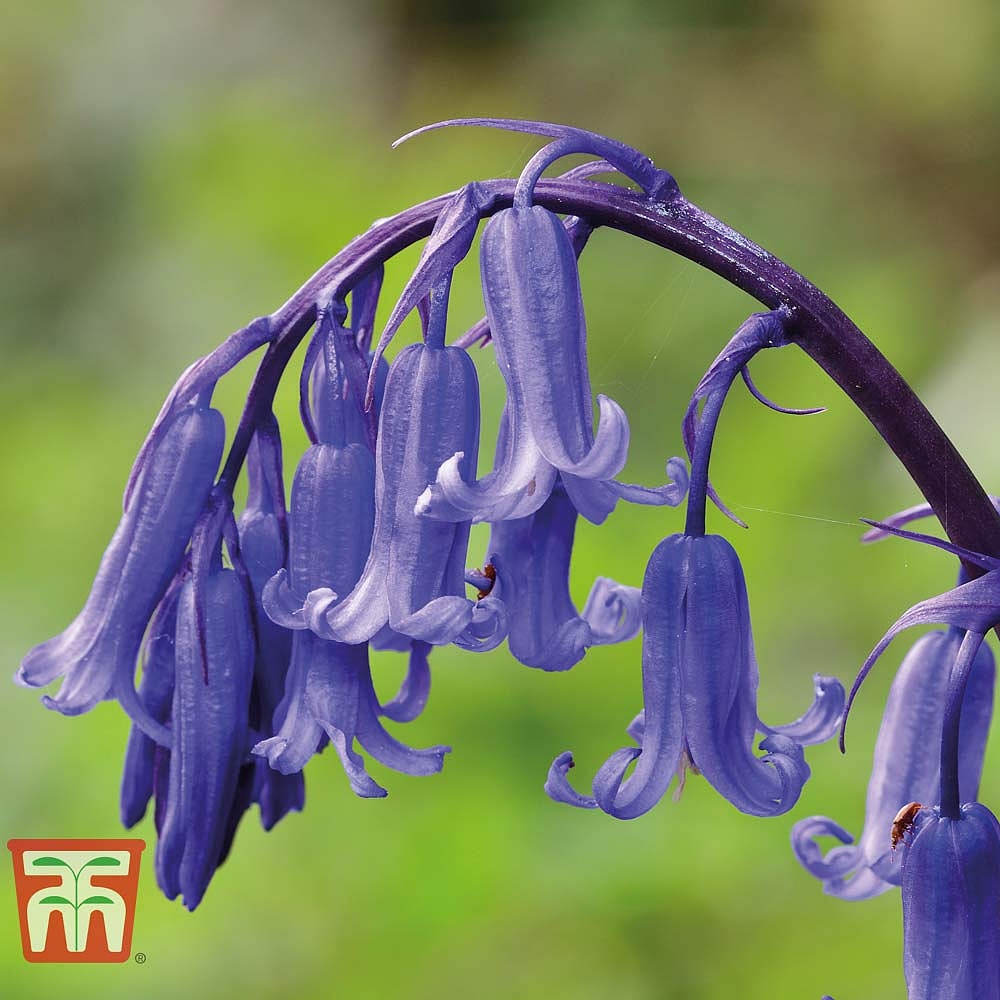Beware, the English Bluebell is under threat from Spanish invaders! The quintessential English bluebell (Hyacinthoides non-scripta) that we all see and love in our woodlands is in danger due to people inadvertently planting Spanish Bluebells (Hyacinthoides hispanica). The English Bluebells are now being overtaken by the more vigorous Spanish Bluebell and hybridising with them. There are three ways to tell the difference between the two plants as listed below:-
- English Bluebells exude a delightful scent, whereas the Spanish Bluebells do not.
- English Bluebells have a flower stem that arches to one side whereas the Spanish Bluebells are straight.
- English Bluebells are a deeper blue than their Spanish rivals.
We can all help to avert this disastrous March upon our much loved wildflower by increasing the stock of English Bluebells by planting them in our borders, containers and wooded areas in our gardens. These hardy, native bulbs are at their best growing in dappled shade or naturalising in informal grassland. The bulbs will multiply year on year to form a dense carpet of stunning spring colour and scent. With a height of around 25cm (10in) and a spread of around 8cm (3in) they will be happy in containers too. The fact that birds and ants carry the seed means that new plants spring up where they are happy to grow. They are attractive to a myriad of important insects.
Bulbs should be planted in autumn. If they are purchased slightly earlier they can be stored in a cool dry place until you are ready to put them in your gardens. The soil should be improved with organic matter and watering may be required in summer until established. It is recommended with these wildflowers that the bulbs should be thrown and planted where they land in order to make them look as if they have seeded naturally. Foliage should be left intact until it has died back so that it feeds the bulb for the next year. If grown in grass, avoid mowing until the foliage has died back. Overcrowded clumps can be divided in summer after flowering to increase your stock.
If you have memories of a sea of English Bluebells on woodland walks, or would like your children or grandchildren to have the benefit of being able to do so, why not plant some of these wondrous plants and be part of the crusade to save them for our future.
Mark Snelling
To view English Bluebell bulbs at Thompson & Morgan click here
Caution: Bluebells are an irritant to skin and eyes, and are harmful if eaten.
All images copyright Thompson & Morgan


